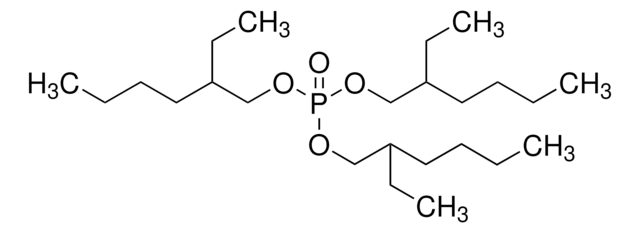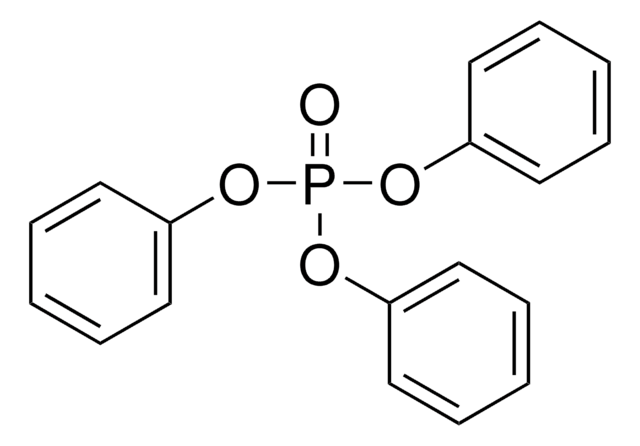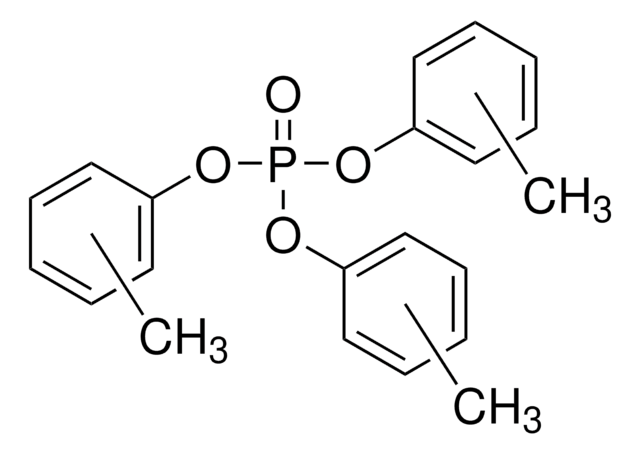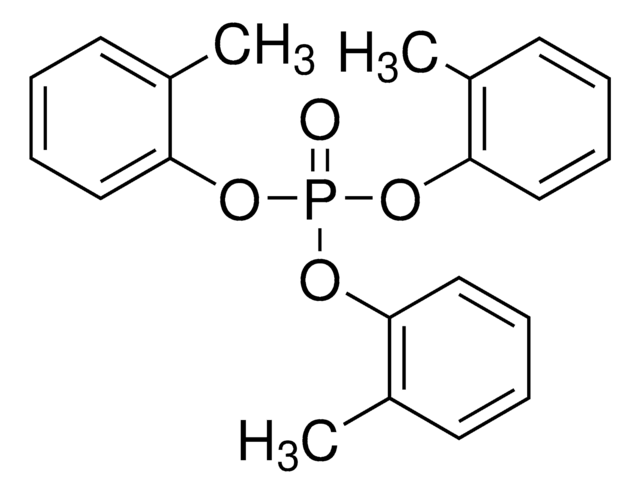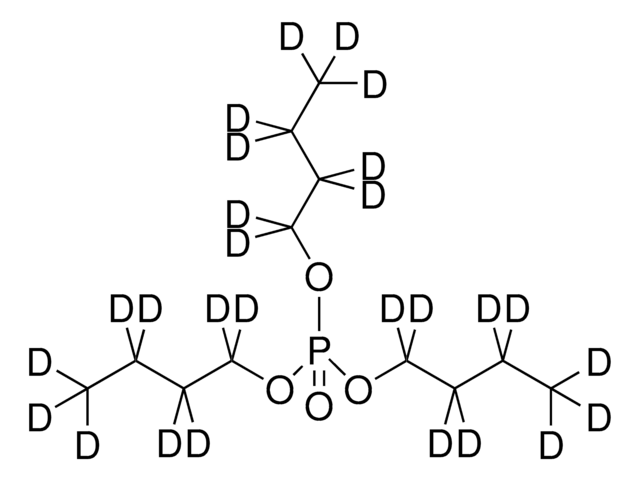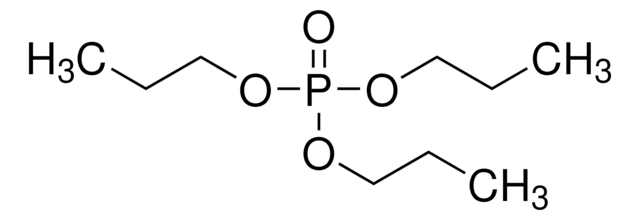130591
Tris(2-butoxyethyl) phosphate
94%
Sinónimos:
Phosphoric acid tris(2-butoxyethyl) ester
About This Item
Productos recomendados
densidad de vapor
13.7 (vs air)
Nivel de calidad
presión de vapor
0.03 mmHg ( 150 °C)
Ensayo
94%
Formulario
liquid
índice de refracción
n20/D 1.438 (lit.)
bp
215-228 °C/4 mmHg (lit.)
densidad
1.006 g/mL at 25 °C (lit.)
cadena SMILES
CCCCOCCOP(=O)(OCCOCCCC)OCCOCCCC
InChI
1S/C18H39O7P/c1-4-7-10-20-13-16-23-26(19,24-17-14-21-11-8-5-2)25-18-15-22-12-9-6-3/h4-18H2,1-3H3
Clave InChI
WTLBZVNBAKMVDP-UHFFFAOYSA-N
¿Está buscando productos similares? Visita Guía de comparación de productos
Categorías relacionadas
Descripción general
Aplicación
- Monitoring of OPFRs in Environmental Samples: A novel method for the rapid monitoring of organophosphate flame retardants (OPFRs) such as tris(2-butoxyethyl) phosphate in environmental samples was developed, utilizing liquid-liquid extraction and gas chromatography-mass spectrometry. This method aids in assessing the biodegradation of such compounds effectively (Losantos et al., 2024).
- Presence in Landfill Soil: A case study explored the prevalence of tris(2-butoxyethyl) phosphate in inert landfill soil, highlighting the environmental impact and challenges in managing the disposal of materials containing this chemical (Stelzer et al., 2023).
- Bioremediation of Contaminated Soil: The study demonstrated that earthworms could enhance the bioremediation of soil contaminated with tris(2-butoxyethyl) phosphate by facilitating the release of degrading microbes, providing a sustainable method to mitigate environmental pollution (Wu et al., 2023).
- Assessment of Human Exposure to Household Chemicals: Research utilized on-line solid-phase extraction coupled with liquid chromatography-tandem mass spectrometry to assess human exposure to chemicals including tris(2-butoxyethyl) phosphate, commonly found in personal care and household products. This study aids in understanding population-level exposure dynamics (Senta et al., 2022).
- SVOCs Transmission from Indoors to Outdoors: Investigation into how textile washing conveys semi-volatile organic compounds (SVOCs) like tris(2-butoxyethyl) phosphate from indoor environments to outdoors, using a residential multimedia model to predict environmental dispersion and impact (Kvasnicka et al., 2021).
Código de clase de almacenamiento
10 - Combustible liquids
Clase de riesgo para el agua (WGK)
WGK 1
Punto de inflamabilidad (°F)
318.2 °F - closed cup
Punto de inflamabilidad (°C)
159 °C - closed cup
Equipo de protección personal
Eyeshields, Faceshields, Gloves, type ABEK (EN14387) respirator filter
Elija entre una de las versiones más recientes:
¿Ya tiene este producto?
Encuentre la documentación para los productos que ha comprado recientemente en la Biblioteca de documentos.
Los clientes también vieron
Global Trade Item Number
| Número de referencia del producto (SKU) | GTIN |
|---|---|
| A2382-10G | 4061833350041 |
| A2382-1G | |
| A2382-250MG | |
| A2382-5G | 4061833350058 |
| 130591-100G | 4061837654855 |
| 130591-500G | |
| 130591-5G |
Nuestro equipo de científicos tiene experiencia en todas las áreas de investigación: Ciencias de la vida, Ciencia de los materiales, Síntesis química, Cromatografía, Analítica y muchas otras.
Póngase en contacto con el Servicio técnico